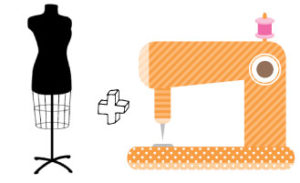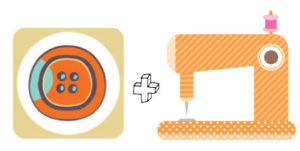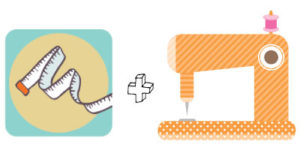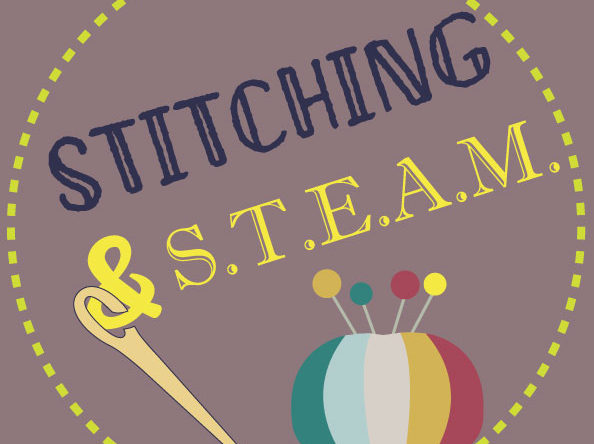
Introduction to Stitching & STEAM
Choo Choo! When ever I hear about STEAM I think of a locomotive. Chugga Chugga Choo Choo.
We all know that STEM & STEAM are super-duper (fairly overused) educational buzz words. But you cannot deny Science, Technology, Engineering, Art & Math are important fundamentals in any type of education for kids.
And you REALLY can’t deny that all of these things are such important parts of learning how to SEW!
As a sewing teacher and trainer to sewing instructors from all over the world, I can tell you that most parents understand that sewing is an important life skill for kids. If they learn how to sew they’ll know how to hem their own pants or repair their stuffed animals when they spring leaks and the stuffing starts coming out. Parents totally “get” the many awesome life skills that come with their kids learning how to sew.
But what about all that OTHER really important things you can learn when you learn how to sew?
This, my friends, is where STEAM comes into the picture.
Science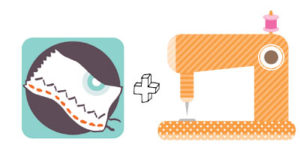
Science teaches us what are things made of and where they come from. Using science, we learn to ask questions about the world around us.
Here are a few questions you can ask your students or use to create new lesson plans:
- What is fabric made of?
- What makes up natural fabric? And what about synthetic fabric?
- How is fabric made?
- How are the threads put together to make cloth and where do they come from?
- Why does some fabric smell a certain way?
- What fabric is best for making bags?
- What fabric is best for making clothing?
Obviously, not every question is right for every group. Beginner students don’t know what fabric is best for making clothing, but that’s why you are teaching them!
Technology
Technology is machinery and equipment developed from the application of scientific knowledge. Both the technology that is used to do the actual sewing and the technology used for making fabric have changed tremendously over the past many decades.
Here are questions for your classes:
- When was the sewing machine invented?
- What did early sewing machines look like?
- How has sewing technology changed throughout time?
- What new, innovative sewing technologies do we use today?
- How has sewing machine technology changed over time?
Engineering
If taking a pile of fabric, some thread and a sewing machine and turning it into a dress isn’t engineering, then I don’t know what is! How you engineer a project is at the forefront of every sewing class. Sewing Workshops follow a series of steps that allow you to turn supplies & tools into a finished item. This is engineering in it’s most natural form!
To help your students understand that what they are making involves engineering, you can compare the patterns they use to blueprints for a house or other building.
Art
Students experience the art of a sewing project when choosing exactly how to design it. This is probably the easiest aspect for students to grasp because it is so visual. One of our students’ favorite parts of pretty much every sewing project is getting to pick out their own fabrics. They love it!
Here are a few questions to get the wheels turning for your students:
- What color & type of fabric will you use?
- Where exactly will you place the pocket?
- Will your design be reversible?
- What type of decorative stitching will you use to applique?
One of my favorite things about sewing my own projects, as well as teaching others to sew their own projects, is that even though we might all be working on the same thing, no two will turn out the same.
Mathematics
One of the most obvious applications of math in sewing is fractions. When sewing, you’re always adding 1/4 inch here and there. But geometry and multiplication also play a part in a good sewing project! (Read my post here about sewing math)
Here are questions for you and your classes:
- What is a seam allowance and how does it affect the size of your project?
- What’s the easiest way to measure how long the strap on your bag should be?
- How can make sure the drawstring waist on your PJ bottoms is the right size?
- How do you measure the circumference of your head to make sure your hat measurements are correct?
Wrap-Up
As you can see, STEAM is all over the place in sewing. Do you have some awesome examples that you want to share with us? Make sure you comment below so we can all learn with you!
If you’re looking for the perfect project for your next class, check out our AWESOME selection of sewing curriculum! We’ve got projects for little kids, big kids, adults, everybody!



